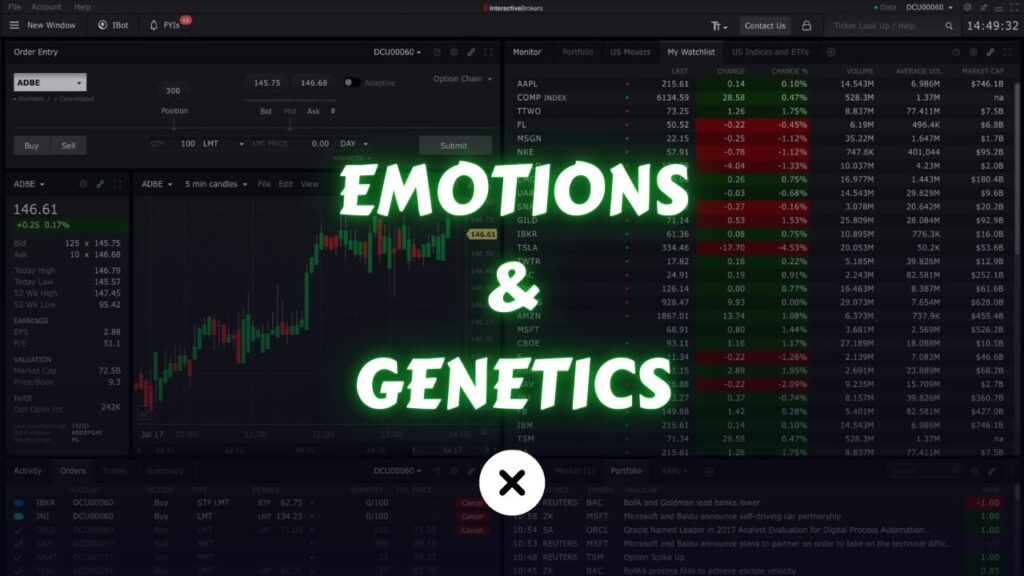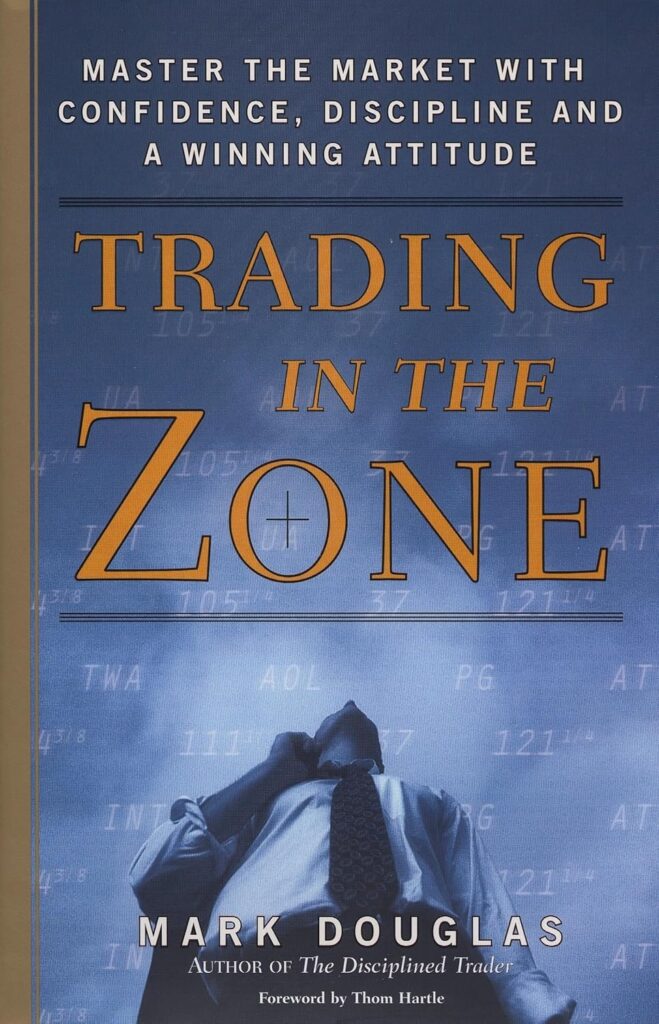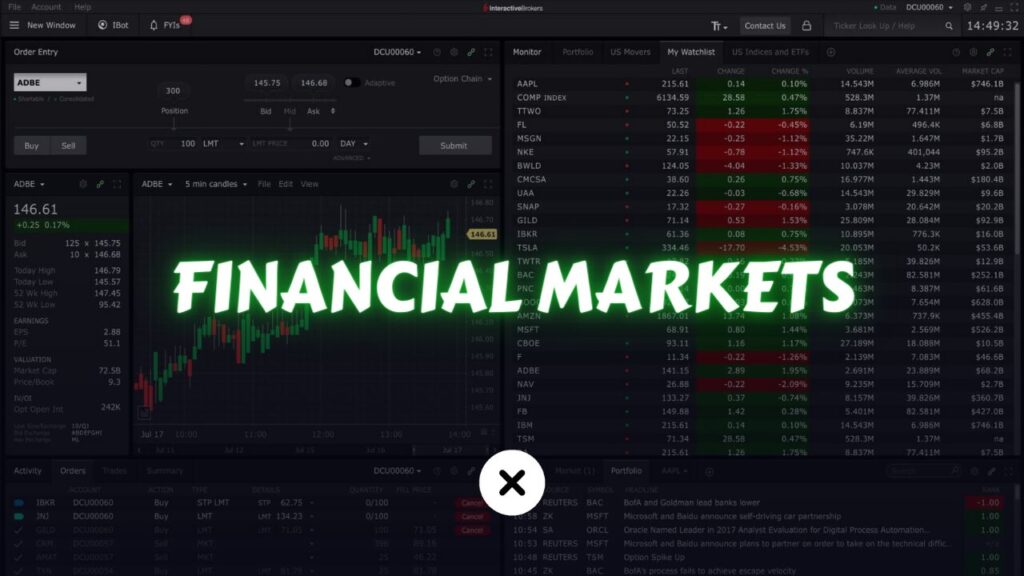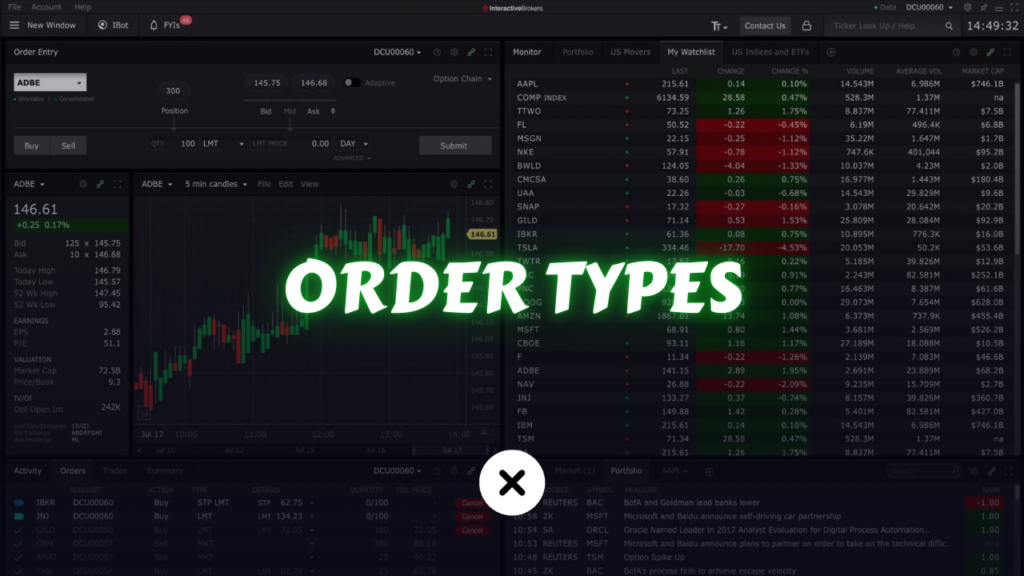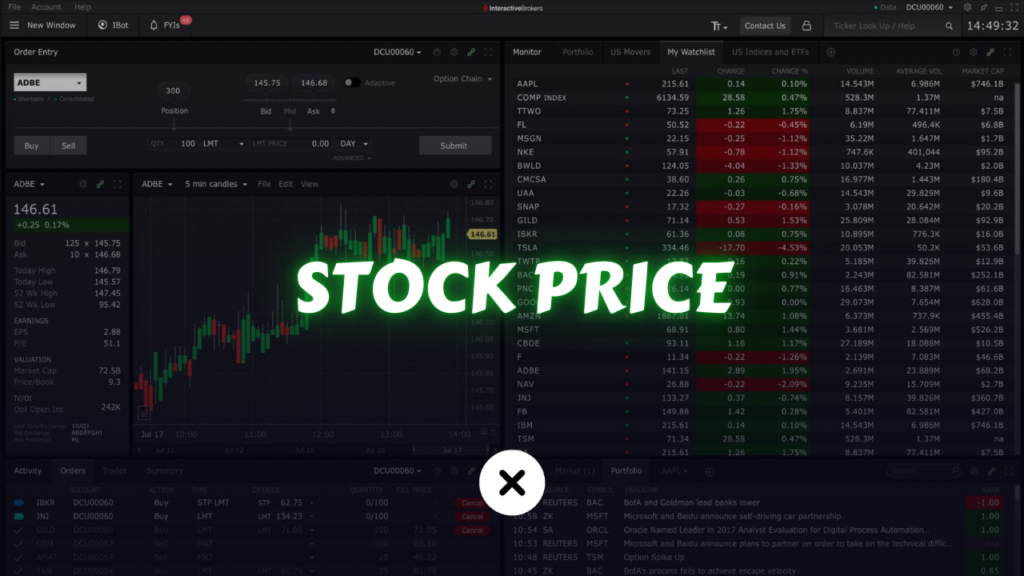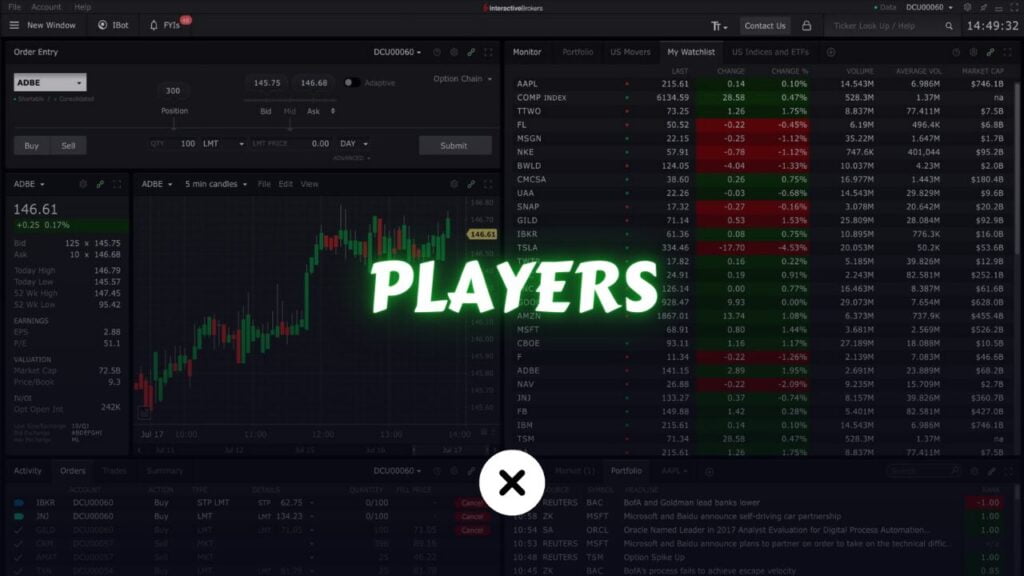In the fast-paced world of financial markets whether trading stocks, forex, cryptocurrencies, or other assets success is about more than just analyzing numbers and charts. Emotions in trading play a crucial role, often determining whether a trader thrives or struggles. Fear, greed, excitement, and anxiety can cloud judgment, leading to impulsive decisions that undermine profitability. While many assume these emotions are purely psychological, research in behavioral finance and evolutionary psychology suggests they are deeply rooted in our genetics and survival instincts.
This article will explore:
- The key emotions that drive trading decisions
- How genetics and evolution have shaped our emotional responses
- Major emotional biases that can derail a trading strategy
- Practical techniques to manage and harness emotions for better trading outcomes
By the end, you’ll gain a deeper understanding of why humans are predisposed to certain emotional biases, how these instincts have been passed down through generations, and why mastering emotions is critical for long-term trading success.
Table of Contents
Why Emotions Matter in Trading
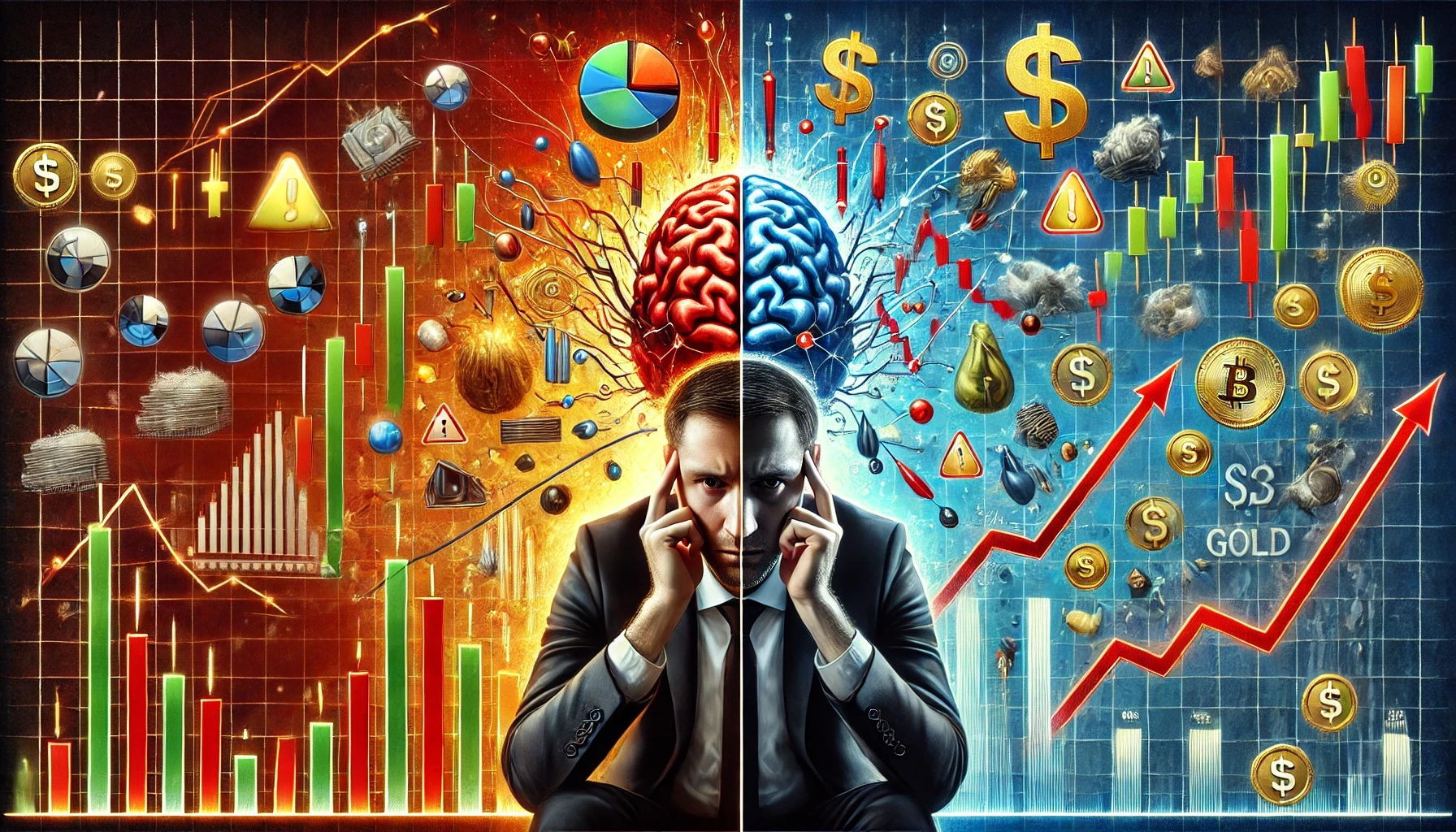
When traders first enter the markets, many assume that success depends solely on finding the “right strategy” or the most advanced technical indicators. However, market veterans repeatedly emphasize the importance of trading psychology often contending that success is 80% psychology and 20% skill or method. But why do emotions hold such sway in trading?
- Rapid Market Fluctuations: Financial markets can turn on a dime. Prices can spike or plummet within seconds, triggering powerful emotional responses.
- High-Stakes Environment: Money represents security ability to afford shelter, food, future stability, and social status. This link often evokes primal feelings of fear (of losing resources) and greed (desire to accumulate more resources).
- Uncertainty: Unlike a simple game of logic, trading involves probabilities rather than certainties. Not knowing the exact outcome of a trade can quickly stir anxiety, self-doubt, and second-guessing.
- Social Influences: News headlines, social media, and discussions in trading forums can amplify emotional reactions. Seeing others panic or celebrate can further skew your own perception.
Effectively managing these emotions can improve discipline, reduce impulsive reactions, and foster consistent decision-making factors that separate successful traders from those who struggle or quit altogether.
Evolutionary Roots: Linking Genetics and Instincts

1. Survival of the Fittest and Its Relevance
Charles Darwin’s concept of “survival of the fittest” underpins much of modern biology and evolutionary psychology. This principle states that organisms best adapted to their environment have a higher likelihood of survival and reproduction, passing on advantageous traits to the next generation. While this often conjures up images of physical traits like the longer necks in giraffes or white fur in polar bears it also extends to behavioral traits and instincts.
In a world where our ancestors had to hunt, gather, and avoid constant physical dangers:
- Individuals who were cautious and risk-averse often lived longer because they minimized dangerous encounters.
- People who protected their resources zealously stood a better chance of surviving through lean seasons, passing on this protective behavior to their offspring.
- Conversely, those who took excessive risks (venturing into unknown territories alone or giving away resources too freely) faced higher mortality and thus didn’t pass their genes on as frequently.
2. The Slow Pace of Genetic Evolution
Though human society has changed dramatically especially in the past few centuries—our genetic evolution has lagged behind. The brain we use today is largely adapted to conditions from thousands of years ago, where threats like wild animals or scarcity of food were everyday realities. Modern-day market swings trigger ancient alarm systems in our brain. In essence:
- Money in trading represents life essentials and social standing (food, shelter, group acceptance).
- Losing money can psychologically equate to losing life-sustaining resources, causing an instinctual surge of fear or panic.
- Gaining money can feel like a step toward better survival odds or higher status, often triggering overconfidence or greed.
These evolutionary forces fuel many of the cognitive biases and emotional reactions traders confront daily.
3. Instincts vs Modern Reality
In the ancestral environment:
- Risk of exploring beyond familiar territory often equated to potential death (e.g., encountering predators or rival groups).
- Status Quo Bias (preference to stick with the known) and Loss Aversion (fear of losing what one has) provided survival advantages.
In modern trading:
- Chart fluctuations do not represent a tiger lurking in the bushes, yet our brain may interpret large losses in a similar “fight or flight” manner.
- Fear and greed, so useful in certain ancestral contexts, can hinder logical decision-making when faced with the complexities of financial markets.
Understanding this mismatch is the first step toward recognizing why we’re susceptible to emotional trading pitfalls and how to manage them.
Common Emotional Biases in Trading

A bias is a systematic error in thinking that affects the decisions and judgments we make. In trading, these biases often lead us to see patterns where none exist, cling to losing trades for too long, or exit winning trades too early. Below are some of the most common emotional biases relevant to traders.
1. Loss Aversion
- Definition: Loss aversion is the tendency to prefer avoiding losses over acquiring equivalent gains. In other words, losing $100 feels more painful than the pleasure of gaining $100.
- Evolutionary Basis: Our ancestors who were more sensitive to potential losses—like losing food or shelter—had a greater chance of survival.
- Impact on Trading: Traders may hold onto losing positions too long, hoping they will “come back,” simply because closing the position and realizing the loss feels worse than the potential of losing even more later.
2. Endowment Effect
- Definition: This bias leads individuals to overvalue what they already own compared to items they do not possess.
- Evolutionary Basis: Holding onto possessions (food, tools, weapons) was critical for survival in the past. Giving away resources risked life and livelihood.
- Impact on Trading: Traders may become irrationally attached to their current holdings, overvaluing a particular stock or coin simply because they already hold it.
3. Status Quo Bias
- Definition: A preference for the current state of affairs, resisting change even when change could be beneficial.
- Evolutionary Basis: Being cautious and sticking to known territories often resulted in fewer life-threatening surprises.
- Impact on Trading: Traders might avoid making necessary portfolio adjustments or fail to switch strategies, staying too long in a losing position or clinging to outdated approaches.
4. Herd Mentality
- Definition: The tendency to follow and copy what other traders are doing, often seen in market bubbles or panic selling.
- Evolutionary Basis: Our ancestors depended on group cohesion for survival. Sticking with the tribe increased safety from predators.
- Impact on Trading: Following others blindly into trades (or out of them) can lead to overpaying for overhyped assets or panic-selling in market corrections.
5. Confirmation Bias
- Definition: The tendency to search for, interpret, and recall information in a way that supports one’s preconceptions, while giving disproportionately less consideration to alternative possibilities.
- Evolutionary Basis: Paying close attention to information that confirmed potential dangers or validated one’s survival strategy was beneficial in ancient times.
- Impact on Trading: Traders might ignore signs that a stock is declining if they are biased toward believing it will recover, or only read news articles that support their current bullish/bearish stance.
6. Overconfidence Bias
- Definition: An unjustified faith in one’s own cognitive abilities, judgments, or decisions.
- Evolutionary Basis: Some argue that overconfidence may have promoted risk-taking in certain ancestral contexts, thereby opening new territory or resources—beneficial under certain conditions.
- Impact on Trading: Traders may overestimate their market knowledge or predictive abilities, risking larger sums of money on fewer trades, or neglecting thorough research and risk management.
How Emotions and Biases Affect Trading Outcomes
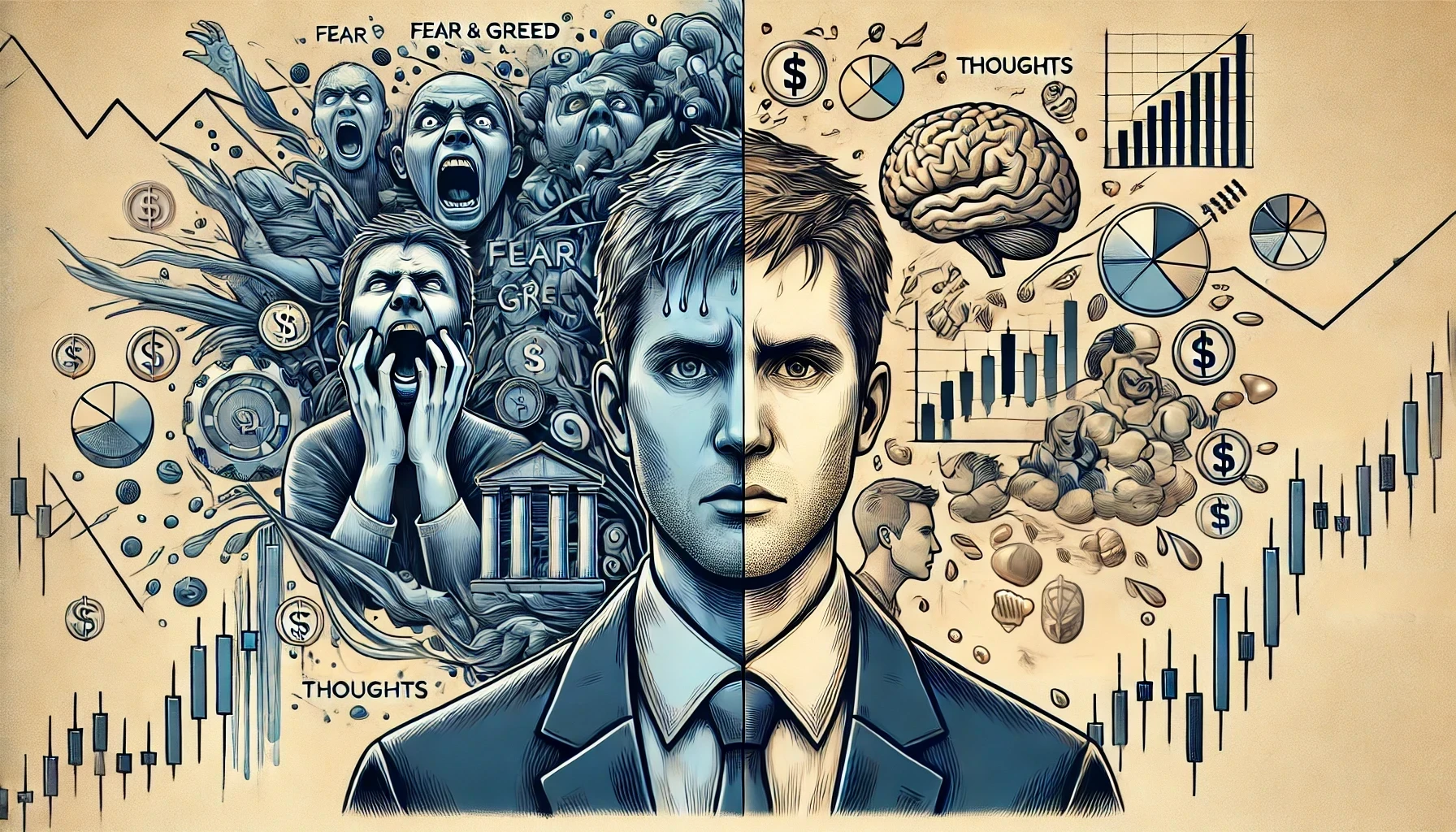
1. Fear and Panic
Fear arises from our fight or flight response, triggered by potential threats. In trading, large or unexpected market moves can mimic a survival threat, leading traders to panic sell and lock in losses prematurely.
- Scenario: A trader sees a quick 10% drop in a stock’s price. Fear drives them to sell at the bottom, only for the price to rebound soon after.
- Long-Term Effect: Repeated panic selling erodes account capital and trader confidence.
2. Greed and Overtrading
Greed, while motivating, can morph into irrational exuberance, as famously described by economist Alan Greenspan.
- Scenario: A trader experiences a series of wins and starts increasing their position sizes exponentially, ignoring risk management. Eventually, a single significant loss wipes out multiple previous gains.
- Long-Term Effect: Greed can lead to overtrading, lack of diversification, and ignoring exit strategies.
3. Paralysis by Analysis
Some traders drown in too much information. Anxious about missing a critical piece of data, they keep researching and fail to execute trades at opportune moments.
- Scenario: A trader sees a good setup but delays entry while gathering more data. By the time they decide, the stock has already moved significantly.
- Long-Term Effect: Chronic indecision leads to missed opportunities and frustration, further fuelling emotional distress.
4. Emotional Baggage Carry-Over
Emotions can linger from previous trades or even personal life events. A trader suffering a big loss in the morning might overcompensate in the afternoon, trying to “win it all back,” thus compounding losses.
- Scenario: After a bad loss, a trader doubles down on the next trade with a larger position, ignoring their own rules, hoping for a quick recovery.
- Long-Term Effect: Emotional carry-over can create a cycle of revenge trading and inconsistent decision-making.
Real-World Examples of Emotional Trading
1. Dot-Com Bubble (Late 1990s to 2000)
During the dot-com bubble:
- Greed and herd mentality drove stock prices for tech companies with no profits (and sometimes no revenue) to astronomical levels.
- When the bubble burst, panic selling ensued, leading to the NASDAQ Composite losing nearly 78% of its peak value.
2. The 2008 Financial Crisis
- Fear dominated the 2008 crisis, triggered by the housing market collapse.
- Many traders sold at extreme lows, only for markets to eventually recover, underscoring how panic can lead to missed long-term opportunities.
3. Meme Stock Frenzy (GameStop, AMC, etc.)
- Fueled by social media platforms like Reddit, traders piled into stocks such as GameStop and AMC in early 2021.
- This scenario highlighted herd mentality, where emotional excitement (and FOMO—Fear of Missing Out) superseded fundamental analysis.
- Extreme volatility saw some traders gain massive profits, while others entered late, succumbing to fear and selling at a loss.
These historical examples emphasize that emotion-driven decisions rooted in genetics and instincts for group belonging or fear of losses can spark frenzies of buying or selling, amplifying market volatility.
Strategies to Manage and Harness Emotions

Recognizing the evolutionary and genetic underpinnings of trading emotions is empowering: once you understand why you feel what you feel, you can start employing tools and techniques to mitigate or even leverage those emotions.
1. Develop a Comprehensive Trading Plan
A solid trading plan acts as your North Star, guiding decisions when emotions flare up.
- Key Components:
- Entry and Exit Criteria: Define the exact conditions for entering a trade (e.g., a particular chart pattern, fundamental valuation, or technical indicator) and for exiting (take-profit and stop-loss).
- Risk Management Rules: Set a limit on how much of your portfolio you risk per trade—often 1-2% of total capital.
- Time Horizon: Determine if you’re day trading, swing trading, or investing long-term to align your strategies with your schedule and risk tolerance.
Having these rules pre-established helps override spur-of-the-moment decisions driven by fear or greed.
2. Utilize Mindfulness and Emotional Awareness
Mindfulness involves staying present in the moment and objectively observing your thoughts, emotions, and bodily sensations.
- Daily Practice: Spend 5–10 minutes each morning (or evening) in quiet meditation, focusing on your breathing. This routine can strengthen your ability to spot emotional shifts before they control your actions.
- Journaling: Keep a trading journal where you note not only your trades and outcomes but also your emotional state at the time of the trade. Over weeks and months, patterns will emerge, highlighting triggers for emotional upheavals.
3. Use Pre-Set Orders and Automation
Modern trading platforms offer tools to help you preempt emotional override.
- Stop-Loss Orders: Automatic exit points can prevent emotions from making you hold losing trades far too long.
- Take-Profit Orders: Lock in gains by setting target prices. This removes the temptation to keep pushing for more and risking a market reversal.
- Algorithmic or Systematic Trading: Some traders build or use automated systems that execute trades based on predefined criteria, reducing the impact of emotional bias. However, these systems still require oversight.
4. Position Sizing and Diversification
- Position Sizing: The amount of capital you allocate to each trade significantly influences your emotional state. Over-leveraging or putting too large a portion of your account into one trade can magnify fear and greed.
- Diversification: Spreading your capital across multiple assets or sectors can reduce the emotional toll if one trade or sector experiences a severe downturn.
5. Take Breaks and Avoid Overexposure
- Scheduled Breaks: Step away from charts periodically, especially after a series of losses or when feeling overwhelmed.
- Limit Screen Time: Constantly watching every tick can amplify stress. Setting alerts for critical price levels allows you to walk away from your trading desk without losing track.
6. Consider Professional or Peer Support
- Mentorship: A seasoned trader can provide guidance, help refine your trading plan, and keep you accountable.
- Trading Communities: Discussing with peers can normalize the emotional rollercoaster and offer alternative perspectives on the market.
7. Cognitive Behavioral Techniques
- Reframing: Instead of seeing a loss as a devastating blow, reframe it as “the cost of business” or a normal part of a longer-term strategy.
- Exposure Therapy: Practice placing small trades or use simulated trading to reduce anxiety through repeated exposure to risk in a controlled manner.
Building a Resilient Trading Mindset
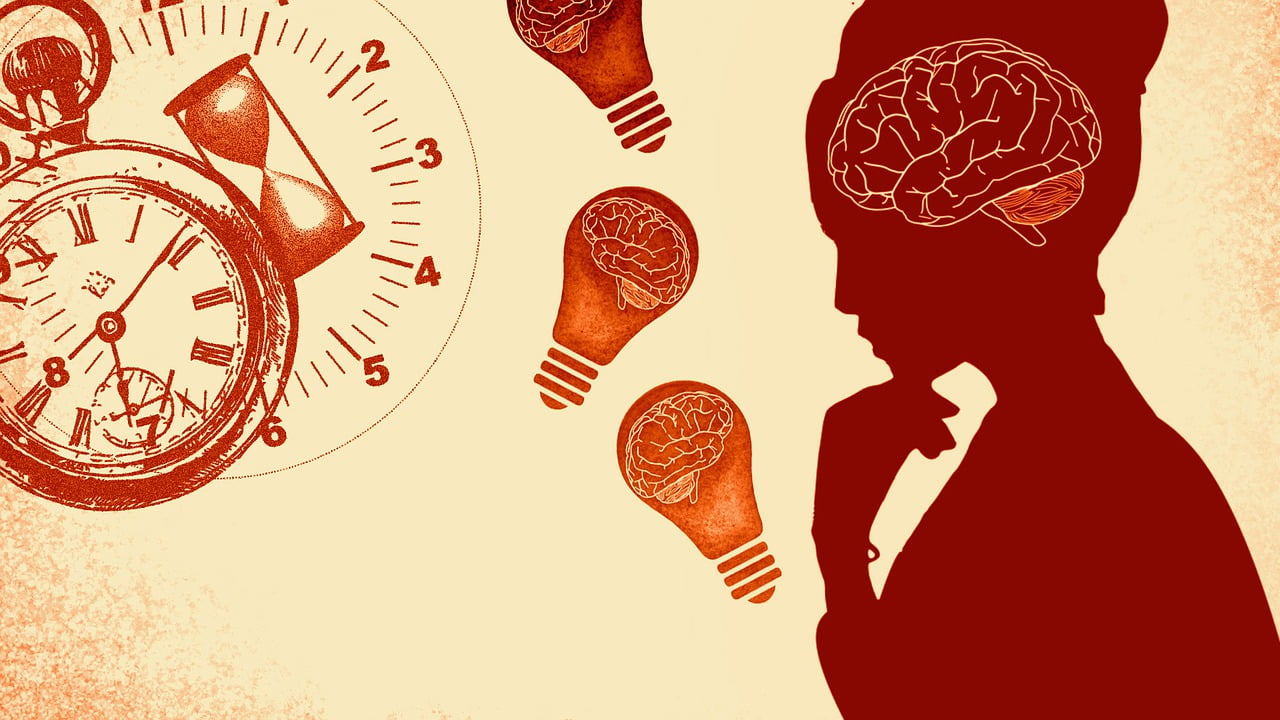
1. Embrace the Learning Curve
Trading is both art and science. Embrace the fact that you will make mistakes some due to external market forces, others due to your own emotional or cognitive biases.
- Growth Mindset: Adopt the perspective that every setback is an opportunity to learn, not an indictment of your abilities.
- Continuous Education: Read about trading psychology, follow market analysts, and engage with diverse viewpoints to broaden your knowledge.
2. Develop Emotional Endurance
Emotional endurance is the capacity to handle losses, drawdowns, and market volatility without abandoning your carefully crafted approach.
- Strategies:
- Regular Reflection: Weekly or monthly reviews of your trading performance—examining both wins and losses—foster self-awareness.
- Physical Health: Exercise, adequate sleep, and proper nutrition directly impact mental resilience. A healthy body supports a clear, stable mind.
3. Align Trading Style with Personality
Your risk tolerance and lifestyle should inform your trading style.
- Day Trader vs. Swing Trader vs. Investor: Some people can handle the rapid pace of day trading. Others prefer the calmer waters of swing trading, checking positions once daily. There’s no one-size-fits-all approach.
- Tool Selection: If you dislike constant monitoring, incorporate automated alerts or consider algorithmic trading strategies.
4. Cultivate Long-Term Thinking
Even if you’re a short-term trader, a long-term perspective can help mitigate emotional extremes.
- Focus on Process, Not Just Results: A good trade is one executed according to plan, regardless of whether it ultimately results in a profit or loss. Over a large sample of trades, consistent execution outperforms emotional flip-flopping.
- Avoid Knee-Jerk Reactions: If you encounter a market downturn, remember that setbacks are normal, and rash responses often lead to bigger losses.
5. Practice Self-Compassion
It’s easy to berate yourself for taking a bad trade or missing a winning opportunity. This negativity can accumulate, causing stress and damaging your confidence.
- Positive Self-Talk: Remind yourself that you’re learning and that losses are part of the game.
- Realistic Expectations: Recognize that even the most experienced traders endure losing streaks.
Conclusion
Emotions play a significant and sometimes overwhelming role in trading. Far from a sign of weakness, emotions are deeply rooted in our genetic code and evolutionary history, where fear, caution, and group conformity once guarded us against physical threats in the wild. Today, these primal instincts can become liabilities if we remain unaware of them in the high-stakes world of financial markets.
Yet, modern traders are not helpless. By understanding the evolutionary roots of our behavior, we gain a powerful lens to see why we’re susceptible to biases like loss aversion, endowment effect, and herd mentality. With the right tools trading plans, risk management, emotional awareness, and ongoing self-improvement we can learn to manage or even harness these ancient instincts.
The key is not to eliminate emotions altogether but to recognize, accept, and channel them in a way that aligns with our long-term trading objectives. This path requires discipline, practice, and sometimes stepping outside our comfort zones to adopt new habits. The reward is a calmer, more consistent approach to the market that stands the test of time and the test of our own emotional triggers.
Key Takeaways and FAQs
Key Takeaways
- Emotions Are Inevitable: Emotions like fear and greed stem from our evolutionary past, where they offered survival advantages.
- Biases Shape Our Decisions: From loss aversion to herd mentality, biases often stem from ancient instincts and can severely impact trading performance if unchecked.
- Awareness Is the First Step: Recognizing that emotions and biases are at play allows you to implement strategies—like trading plans, mindfulness, and risk management—that keep them under control.
- Long-Term Success Requires Discipline: Building a stable, process-oriented mindset is vital for navigating the ups and downs of the market.
- Consistency Over Perfection: Even top traders make emotional mistakes. Continuous self-reflection and adaptation are essential for growth.
FAQs
- Q: Can I ever completely remove emotions from my trading?
A: It’s almost impossible to eliminate emotions entirely—they’re part of being human. The goal is to manage them, not repress them. - Q: How do genetics specifically influence trading decisions?
A: Genetics shape our baseline temperament and instinctual responses. Traits like risk aversion or loss aversion can be traced back to survival behaviors in our evolutionary past. - Q: Is using a trading algorithm a foolproof way to avoid emotional bias?
A: While algorithms can reduce human emotional interference, they’re still designed or set up by humans, who may inadvertently program their biases into the system. Plus, market conditions can change, requiring updates to the algorithm. - Q: What if I constantly feel fear in trading? Should I quit?
A: Not necessarily. Fear often signals caution, which can be beneficial. Instead of quitting, work on risk management, trade smaller sizes, and practice mindfulness. Over time, you can build emotional resilience. - Q: How do I know when it’s time to take a break from trading?
A: Signs include mounting stress, poor sleep, frequent revenge trading, and a noticeable dip in your ability to stick to your trading plan. If these issues persist, step back and reassess your strategy and mindset. - Q: Can reading more about evolutionary psychology really help my trading?
A: Yes, understanding the why behind our behaviors provides insights into how to manage them. It can deepen self-awareness and offer practical ways to mitigate harmful emotional reactions.
Final Words
The dynamic interplay of emotions, genetics, and instincts makes trading both challenging and, for many, deeply rewarding. By shining a light on the evolutionary mechanics that shape how we perceive and act on risk, we become better equipped to make rational decisions—even under pressure. With consistent practice, reflective learning, and disciplined trading strategies, you can transform your emotions from your fiercest adversary into an ally that keeps you alert, adaptive, and ultimately successful in the markets.
Further Reading & Resources
“Thinking, Fast and Slow” by Daniel Kahneman – Explores cognitive biases and decision-making.
“Trading in the Zone” by Mark Douglas – Classic text on trading psychology.
- Harvard Business Review Articles – Search for “behavioral finance” and “evolutionary psychology” topics.
- Behavioral Finance Research – Journals like Journal of Behavioral Finance publish studies that dive deeper into psychological biases.
